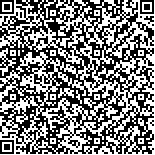| Quote
: |
吴淑艳,虞坚尔,薛征.平喘方调控HMGB1/TLR4通路对哮喘小鼠气道炎症的影响[J].湖南中医药大学学报英文版,2021,41(10):1510-1516.[Click to copy
] |
|
| |
|
|
| This paper
:Browser 3148times Download 2083times |
| 平喘方调控HMGB1/TLR4通路对哮喘小鼠气道炎症的影响 |
| 吴淑艳,虞坚尔,薛征 |
| (上海中医药大学附属市中医医院儿科, 上海 200071;上海市中医药研究院中医儿科研究所, 上海 200071) |
| 摘要: |
| 目的 观察平喘方调控高迁移率族蛋白B1/Toll样受体4(HMGB1/TLR4)通路对哮喘小鼠气道炎症的影响,探索其缓解哮喘气道炎症的潜在机制。方法 将32只BALB/c小鼠随机分为4组:空白组、模型组、地米组、平喘方组,每组8只,采用卵清白蛋白(OVA)联合氢氧化铝腹腔注射和5% OVA雾化吸入激发的方法建立哮喘模型,平喘方组按20 mL/(kg·d)灌胃平喘方汤剂,地米组以等量的地塞米松溶液灌胃,空白组和模型组以等量的蒸馏水灌胃,每日1次,给药干预7 d。各组于最后一次给药后处死小鼠,收集血清、肺泡灌洗液(BALF)及肺组织。HE染色观察肺组织病理学改变;免疫组化染色及定量观察HMGB1、TLR4表达;ELISA法检测BALF及血清中HMGB1、TLR4、IL-4及IFN-γ表达;RT-PCR检测肺组织中HMGB1、TLR4 mRNA表达。结果 (1)与空白组比较,模型组小鼠气道炎性细胞浸润明显,气道壁增厚,管腔狭窄;BALF及血清中HMGB1、TLR4、IL-4含量明显升高(P<0.01),IFN-γ含量明显降低(P<0.01)。(2)与模型组比较,地米组、平喘方组小鼠气道炎症减轻、管腔狭窄减小;BALF及血清中HMGB1、TLR4、IL-4含量明显降低(P<0.05,P<0.01),IFN-γ水平升高(P<0.01)。(3)与地米组比较,平喘方组小鼠气道炎症变化不明显;HMGB1表达增强(P<0.01);BALF中TLR4、IL-4、IFN-γ含量均明显升高(P<0.05,P<0.01),HMGB1含量减少(P<0.01);血清中HMGB1、TLR4含量明显降低(P<0.01),IL-4、IFN-γ含量明显升高(P<0.05,P<0.01)。结论 平喘方可降低哮喘小鼠HMGB1、TLR4、IL-4含量,升高IFN-γ含量,改善哮喘小鼠肺组织炎症,其作用机制可能与平喘方抑制HMGB1/TLR4通路的表达相关。 |
| 关键词: 哮喘 平喘方 HMGB1/TLR4通路 炎症 |
| DOI:10.3969/j.issn.1674-070X.2021.10.007 |
| Received:November 24, 2020 |
| 基金项目:国家自然科学基金项目(81874488);上海中医药大学预算内项目(18LK054)。 |
|
| Effect of Pingchuan Recipe on Airway Inflammation in Asthmatic Mice by Regulating HMGB1/TLR4 Pathway |
| WU Shuyan,YU Jian'er,XUE Zheng |
| (Shanghai Municipal Hospital of Traditional Chinese Medicine, Shanghai University of Traditional Chinese Medicine, Shanghai 200071, China;Institute of Pediatrics of Traditional Chinese Medicine, Shanghai Institute of Traditional Chinese Medicine, Shanghai 200071, China) |
| Abstract: |
| Objective To observe the effect of Pingchuan Recipe on inflammation of asthmatic mice by regulating high mobility group box 1 protein/toll like receptors 4 (HMGB1/TLR4) signaling pathway, and to explore the internal mechanism of relivering airway inflammation in asthma. Methods 32 BALB/c mice were randomly divided into four groups:blank group, model group, dexamethasone group, Pingchuan Recipe group, with eight mice in each group. Asthma model was established by intraperitoneal injection of ovalbumin (OVA) combined with aluminum hydroxide sensitization and aerosolized inhalation of 5% OVA. Pingchuan Recipe group was given Pingchuan Recipe at 20 mL/(kg·d) by gavage, dexamethasone group was given the same amount of dexamethasone solution by gavage, blank group and model group were given the same amount of distilled water, once a day, for seven days. Mice in each group were sacrificed after the last administration, serum, bronchoalveolar lavage fluid (BALF) and lung tissue were collected. HE staining was used to observe lungs tissue pathological changes in each group. The positive expression levels of HMGB1 and TLR4 in lungs tissues were observed by immunohistochemical staining and quantification. The expression levels of HMGB, TLR4, IL-4, IFN-γ in BALF and serum were determined by ELISA. RT-PCR was used to detect the expression of HMGB1 and TLR4 mRNA in lungs tissue. Results (1) Compared with blank group, airway inflammatory cell infiltration was obvious, airway wall thickened and lumen narrowed in model group, the content of HMGB1, TLR4 and IL-4 was significantly increased (P<0.01), while the content of IFN-γ was significantly decreased (P<0.01). (2) Compared with model group, airway inflammation and lumen stenosis of mice in dexamethasone group and Pingchuan Recipe group were reduced, the content of HMGB1, TLR4 and IL-4 was significantly decreased (P<0.05, P<0.01), while the level of IFN-γ was increased (P<0.01) in BALF and serum. (3) Compared with dexamethasone group, the changes of airway inflammation in Pingchuan Recipe group were not obvious. The expression of HMGB1 was enhanced (P<0.01). The content of TLR4, IL-4 and IFN-γ in BALF was significantly increased (P<0.05, P<0.01), while the content of HMGB1 was decreased (P<0.01). The content of HMGB1 and TLR4 in serum was significantly decreased (P<0.01), while the content of IL-4 and IFN-γ was significantly increased (P<0.05, P<0.01). Conclusion Pingchuan Recipe can reduce the content of HMGB1, TLR4 and IL-4, and increase the content of IFN-γ, and improve lungs inflammation in asthmatic mice, the mechanism may be related to the inhibition of the expression of HMGB1/TLR4 pathway by Pingchuan Recipe. |
| Key words: asthma Pingchuan Recipe HMGB1/TLR4 pathway inflammation |
|

二维码(扫一下试试看!) |
|
|
|
|


